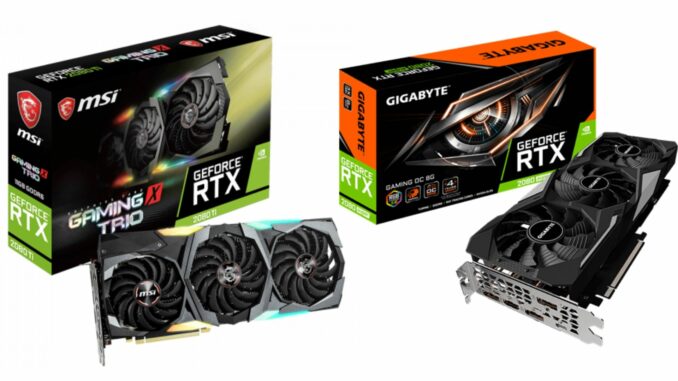
Please note: As an Amazon Associate I earn from qualifying purchases. I also work with other affiliate partners and may be compensated from the links below. Details here.
There is no doubt that upgrading a graphics card is one of the most exciting things for any gamer out there. However, It is also the most expensive upgrade you can make and for that reason you need to be equipped with knowledge to make the right choice. And that’s where we can help you – help you to make the best decision.
We took some time and put together a simple guide that will help you understand which graphics card will suit your gaming style the best and also make sure the card you choose will be compatible with your PC.
Then we went ahead and did a research and testing and based on the results we put together a list of 10 best graphics cards of 2020, so you can choose from the best graphics cards on the market right now.
Make sure you read the full guide before jumping into the reviews. It was written to help you choose a graphics card you are going to be pleased with in terms of performance, but also to save some money in the process – you don’t need to be overpaying for a component that gets replaced every couple of years or so.
In the current time there are hundreds of graphics cards from a number of competing manufacturers. They have different looks, dimensions, GPU architectures, clock speeds, etc. However, vast majority of them have one thing in common, or I should say two things – they use graphic chips from either NVIDIA or AMD.
NVIDIA GPUs are known to provide the best performance and newest technologies with higher price tags than AMD. However, AMD tends to beat NVIDIA in the middle class offering better price to performance ratio.
Things To Consider Before Buying a GPU
Performance
First things first, I want you to keep in mind that more expensive doesn’t always mean better for you. When deciding on how powerful graphics card you are going to buy, you should take into account if you play games at all, if yes, then which games do you usually play. If you’re building an office computer, spending hundreds of dollars on a GPU wouldn’t make much sense.
However, if you’re a casual gamer who plays games from time to time, look for an average graphics card in the range of $150 and more. And if you belong in the third category – serious gamers – start looking for the most powerful GPUs out there. See, the thing is, the newest games are really demanding and to play them on the highest resolution and FPS, you need to reach deep in your pocket.
The performance is the single most important factor when it comes to choosing a graphics card and also the one to have the biggest impact on the price. Sometimes it can get confusing and for that reason they typically divide into four categories:
- Flagship – the top of the ladder GPUs – $800 and more
- High-end – above average GPUs – $400 – $800
- Mainstream – average GPUs – $150 – $400
- Low-end – below average GPUs – less than $150
Another important thing to take into account is how demanding are the games you usually play. For example someone who plays fast-paced, FPS game like Overwatch, Apex Legends, Call of Duty etc. will need to choose a GPU from the high-end category to run these game on high enough FPS and details, especially if they use a high refresh rate monitor. But someone who plays League of Legends or other games of slower character can easily pick a solid one from Low-end category and be perfectly fine.
Compatibility & Connectivity
Once you’ve decided on a certain GPU, you need to also make sure the card will be compatible with your PC.
- Dimensions – due to the fact there is no standard sizing of graphics cards, you should check if a graphics card you’ve picked will fit your PC. Problems can occur if your card is either too long or too wide. Wider card can occupy multiple slots and that can significantly limit your PC´s functionality.
- Power Supply – Another important thing to do is to check your GPU power consumption listed by the manufacturer. GPUs are the most power hungry components and the more powerful they are, the more power they will typically consume and you need to choose a power supply accordingly. You can go with manufacturer’s recommendation or you can choose one by yourself, by just adding up how much power each component consumes and adding reasonable reserve for future upgrades or overclocking – 100W should be enough.
- Additional Power Connectors – If the power input of your GPU is higher than 75W, you will need additional power connectors. Available are 6-pin (75W) or 8-pin (150W) connectors. You need to make sure you have as many power connectors and slots for them as you need for optimal power supply.
Important GPU specs
- Memory Clock Speed – The faster your memory chips are, the faster will your graphics card process the data and send them to your monitor
- VRAM Capacity – The bigger your RAM is the more data will your GPU have quick access to – more RAM, faster GPU
- Clock Speed – GPU Clock is typically being overclocked by the manufacturer to higher frequencies. The faster the clock speed, the faster the card will receive and send commands to the monitor
- Cuda Cores/Stream processors – The number of processors (cores) in your GPU signalizes how fast will your GPU be able to process numerous difficult operations simultaneously – more processors equals faster data processing
These are the factors that will tell you a lot about performance. If a card you’ve picked is compatible iwth your PC, then make sure the specs are as high as possible. Also, keep in mind that different manufacturers have different quality graphic chips and the same chips (on paper) can be overclocked to higher frequencies than others.
All graphics cards have been tested in my current set-up:
- CPU: Intel Core I7-8700k 5200 MHz
- Motherboard: , Asus Maximus X APEX
- RAM: 16GB RAM at 3600MHz
- SSD: Kingston SSDNow UV400 120GB
- Power Suply: EVGA SuperNOVA Gold 850 G2
- Operating System: Windows 10 (64-bit)
- Monitor: 27″ Acer XB273K Pbmiphzx Predator 4K UHD
And here is the list of gaming titles we tested the cards with: Destiny 2, Battlefield V, Hitman 2, Far Cry 5, Metro Exodus, Tom Clancy’s Ghost Recon, Wolfenstein II, Assasin’s Creed: Origins, Crysis 3
Our Top 10 List
In the table below you can see our top picks for the year 2020. All of these graphics cards cover various budget options and performance levels, so you can choose the one that both fits your budget and meets your needs. To see our full review, simply click “review>>“ on a respective row.
Product Image Rating MSI GeForce RTX 2080 Ti Gaming X TRIO 11G 9.8 GIGABYTE GeForce RTX 2080 Super Gaming OC 8G 9.6 PowerColor Radeon VII 16G HBM2 9.2 ASUS ROG STRIX GeForce RTX 2070 Super O8G 9.5 GIGABYTE GeForce RTX 2060 Super AORUS 8G 9.2 ASUS ROG STRIX Gaming Radeon RX 5700 XT O8G 9.4 GIGABYTE GeForce GTX 1660 Ti AORUS 6G 9.1 Sapphire Radeon RX 5700 8G 8.9 ASUS ROG Strix GeForce GTX 1660 Ti O6G 9.3 GIGABYTE GeForce GTX 1650 OC 4G 8.1
“Best Overall“
“Cheaper 4k option“
“Best for content creation & QHD gaming“
“Best for QHD gaming“
“Lower-end QHD option“
“Best AMD card for QHD gaming“
“Best for FullHD gaming“
“Value Pick for QHD gaming“
“Best for FullHD gaming“
“Best budget efficiency card“
1. MSI GeForce RTX 2080 Ti GAMING X TRIO 11G
CUDA Cores: 4352 | Interface: PCI Express x16 3.0 | Base Clock: 1350MHz | Boost Clock: 1755 MHz | Memory: 11GB GDDR6 | Memory Clock: 14,000 MHz | Memory Bus: 352-bit | Dimensions (WxLxH): 140 x 327 x 56 mm | Power Consumption: 300W | Minimum Recommended PSU: 650W | Video Ports: 1x HDMI 2.0b, 3x DisplayPort 1.4, 1x USB Type-C | Power Connectors: 1x 6-pin, 2x 8-pin
REASONS TO BUY
- Incredible performance
- Allows for decent manual overclocking
- VR Ready
- Allows for 4k maxed out settings gameplay of AAA titles
- Super quiet
- SLI support
REASONS TO AVOID
- Astronomical price
- Memory could have been overclocked
- Large GPU, won’t fit all cases
Our Rating: 9.8/10
If you plan on playing the newest games at 4k resolution on maxed out settings, the 2080Ti from MSI is a must have. Just take a look at the specs – 4352 CUDA cores, 11GB GDDR6 memory, 1755 MHZ clock speed (with space for overclocking) – That’s enough to run the likes of Metro Exodus or Hitman 2 on 4k resolution with maxed out settings on minimum 60fps.
When we compared it with the 2080 and 2080S, the results were satisfactory. We put all three to a test in different games and in all of them the 2080Ti was performing around 25-30% better than the 2080, and 15-20% better than the 2080S.
Sure, you will have to reach deeper in your pocket, but you can be sure there is no better GPU available on the market right now.
Not only is this the fastest GPU out there, it also offers features that make it future-proof:
- Real-Time Ray Tracing In Games – With the ray tracing technology used in all RTX GPUs, you will experience almost real life shadows, reflections and lighting, which will bring your gaming experience to the next level
- NVIDIA Turing architecture – Revolutionary architecture combined with the RTX platform combines together real-time ray tracing, artificial intelligence, and programmable shading, offering you a whole new level of gaming experience
- MSI Custom PCB (circuit board) – the MSI circuit board was designed to offer you more room for overclocking. It uses larger surface area and more layers to provide more power and stability.
- VR Ready – Its fully capable of providing immersive, richly detailed three-dimensional graphics
- Advanced Cooling System – Cooling is another thing you don’t need to worry about at all. The three MSI TORX 3.0 fans on a huge heatsink combined with mastered aerodynamics will ensure an excellent, silent and long-lasting cooling system
- MSI Afterburn – MSI afterburner is a graphics card overclocking software that not only lets you crank up your GPU to the highest level possible safely and easily, but also enables you to monitor your system’s most important metrics in real time
It is safe to say this GPU isn’t for everyone. Although it’s offering incredible performance most of us could ever dream for, it’s sky-high price keeps most people from buying it. However, if money is not an issue for you, the 2080Ti from MSI will not disappoint you in any way.
2. GIGABYTE GeForce RTX 2080 SUPER GAMING OC 8G
CUDA Cores: 3072 | Interface: PCI Express x16 3.0 | Base Clock: 1650 MHz | Boost Clock: 1845 MHz | Memory: 8GB GDDR6 | Memory Clock: 15500 MHz | Memory Bus: 256-bit | Dimensions (WxLxH): 115 x 287 x 50 mm | Power Consumption: 250W | Recommended PSU: 650W | Video Ports: 3x HDMI 2.0b, 3x DisplayPort 1.4, 1x USB Type-C | Power Connectors: 1x 6-pin, 1x 8-pin
REASONS TO BUY
- Tremendous performance at QHD
- Legitimate performance at 4k
- 4 years waranty
- Superb cooling system
- SIlent even under full load
- 7 video outputs
REASONS TO AVOID
- Still very high price
Our Rating: 9.6/10
Another card on the list is the 2080 Super from Gigabyte. When tested by the most demanding games at 4k with maxed out setting the performance wasn’t quite as good – getting on average 20-30 fps less than the 2080Ti. But that’s something to expect with much cheaper price compared to the 2080Ti.
However, if you’re willing to bump the settings a bit down, you can expect the card to do it’s job perfectly.
Where the 2080 Super from Gigabyte really excels is at 2560×1440. If you have a 144hz QHD monitor, you can expect sizzling fps in the newest games at highest quality possible.
Apart from a good performance the Gigabyte 2080 Super has even more to offer:
- 4 Years Warranty – with generous 4 years warranty you can push your GPU to the limit every day with piece of mind. And in 4 years you will mostly likely be looking to replace it because of the nature of the gaming industry. Though, you need to sign up on the Gigabyte’s website withing 30 days of purchase
- AORUS Engine – This Gigabyte’s software will allow you to control clock speed, voltage, fans speed, etc. in real time so you will be able utilize your card as much as possible
- NVIDIA Turing architecture – Revolutionary architecture combined with the RTX platform combines together real-time ray tracing, artificial intelligence, and programmable shading, offering you a whole new level of gaming experience
- Exceptional Windforce 3X Cooling System – featuring 3x 82mm unique blade fans, alternate spinning fan, 6 composite copper heat pipes, heat-pipe direct touch and 3D active fan functionality, altogether providing an excellent heat dissipation capacity for higher performance at lower temperatures
- Protection Metal Back Plate – not only provides a good amount of protection but also increases durability and gives the card a pleasant look from the back
Even though it’s considerably less expensive than the 2080 Ti, it offers a cutting-edge performance at QHD and also does well at 4k resolution – all in all you are looking at around 20% drop in performance, although the price is much lower, around 40%, which can be a good reason for picking up this GPU over the 2080Ti.
3. PowerColor Radeon VII
Stream Processors: 3840 | Interface: PCI Express x16 | Base Clock: 1400 MHz | Boost Clock: 1750 MHz | Memory: 16GB HBM2 | Memory Clock: 2200 MHz | Memory Bus: 4096-bit HBM2 | Dimensions (WxLxH): 121 x 267 x 40 mm | Power Consumption: 300W | Recommended PSU: 650W | Video Ports: 1x HDMI 2.0b, 3x DisplayPort 1.4 | Power Connectors: 2x 8-pin
REASONS TO BUY
- Excellent performance
- 16GB(!) HBM2 memory
- Useful for both gaming and content creation
- Can compete with Nvidia RTX 2080
- Insane 1TB/s memory bandwidth
REASONS TO AVOID
- Steep price
- Loud under heavy load
- Power hungry
Our Rating: 9.2/10
The newest high-end graphics card from AMD was the first to enter the market with 7nm CPU and respectable 16GB HBM2 memory and 1TB per second memory bandwidth. Because of that you will be able to immerse yourself into the lifelike gaming graphics up to 4k.
After testing the Radeon VII, it is safe to say it is fully capable of competing with the Nvidia’s 2080 at a similar price. The 2080 Super and 2080Ti still remain untouched by the AMD.
At QHD with maxed out settings, the Radeon VII did well averaging north of 100 fps in most cases and compared to the 2080 Super from Nvidia it performed 10% slower.
At 4k, you will have to make some adjustments in quality setting to ensure smooth 60fps gaming, but that varies from title to title. For example Wolfenstein 2 on ultra manages to pull around 80fps on average, while Tom Clancy’s Ghost Recon pulls around 50 fps on average.
That being said, as the 2080, The VII shines at QHD and also does really good at 4k, however you will have to make some compromises with certain titles.
However, Radeon’s unique architecture will benefit you in more ways than just gaming:
- Stunning Memory – With 16GB of HBM2 memory, 1TB/s bandwidth and 4096-bit memory interface the Radeon VII has 45% more memory and 66% more memory bandwidth than any other card in it’s class. Besides from the highest quality gaming, due to the insane memory it is perfect for creating content in up to 8k resolution or VR
- RDNA architecture – The revolutionary 7nm architecture allows the GPU to run 25% faster with the the same power level than last years model Vega 64
It is nice to see AMD making a high-end GPU that can compete with Nvidia on a higher level, however if you are deciding solely from the gaming perspective, with similar price as the direct competitor (RTX 2080) and the fact the VII performs slower in most of the cases, I don’t see a reason why would you pick the VII over the 2080 or the Super version for that matter.
4. ASUS ROG STRIX GeForce RTX 2070 Super O8G
CUDA Cores: 2560 | Interface: PCI Express x16 3.0 | Base Clock: 1605 MHz | Boost Clock: 1905 MHz | Memory: 8GB GDDR6 | Memory Clock: 14000 MHz | Memory Bus: 256-bit | Dimensions (WxLxH): 130 x 300 x 54 mm | Power Consumption: 300W | Recommended PSU: 650W | Video Ports: 2x HDMI 2.0b, 2x DisplayPort 1.4, 1x USB Type-C | Power Connectors: 2x 8-pin
REASONS TO BUY
- Large space for overclocking
- Shines at QHD and FullHD
- Proper ASUS cooling system
- Packed with features
REASONS TO AVOID
- Higher price
- Lacks at 4k
Our Rating: 9.5/10
With the ASUS RTX 2070 Super we are slowly getting to the more affordable, yet still powerful category of GPUs. Before we jump into the testing results, lets look at the difference between the founder’s edition and the one from ASUS.
They both have a base clock of 1605MHZ, however the default gaming mode boost clock of the ASUS version is 1905MHz compared to 1770MHz of the reference card, which is one of many things that make up for the price difference.
When we tried overclocking the ASUS 2070 Super, we are impressed to say we were able to boost the clock up to 2100MHz and the memory up to 16GHz stable.
After overclocking, we tested the card with our bundle of games at maxed out settings, of course.
After testing it at 4k and QHD the results are crystal clear. While struggling to reach 60 fps at 4k in some cases, It does exponentially better at QHD, staying well north from the 60fps mark, the only title to cause the 2070 Super problems with reaching the 60fps mark was the extremely taxing Metro:Exodus.
The ASUS ROG STRIX GeForce RTX 2070 Super O8G also features:
- NVIDIA Turing architecture – Revolutionary architecture combined with the RTX platform combines together real-time ray tracing, artificial intelligence, and programmable shading, offering you a whole new level of gaming experience
- 0db Technology – This technology stops the fans when the temperature drops below 55 degrees Celsius which lets you play lighter games in relative silence
- Axial-tech fan design – newer and more advance cooling system design, featuring smaller hub with longer blades and a ring barrier that increases air pressure
- GPU Tweak II – ASUS software that allows easy system monitoring, performance tweaking and thermal control
- Aura Sync compatibility lets you customize and synchronize lighting effects with other compatible hardware
All this combines for a decent performance at a somewhat reasonable price. Some may argue the price is still higher than it should be, but in my opinion I think you’re getting a good value for the price you’re paying. To sum it up, this 2070 Super is superb at FullHD and QHD, does OK at 4k if you tone the settings a bit down and has excellent cooling and design, which is enough to justify the price, in my opinion.
5. GIGABYTE GeForce RTX 2060 SUPER AORUS 8G
CUDA Cores: 2176 | Interface: PCI Express x16 3.0 | Base Clock: 1650 MHz | Boost Clock: 1845 MHz | Memory: 8GB GDDR6 | Memory Clock: 14000 MHz | Memory Bus: 256-bit | Dimensions (WxLxH): 134 x 290 x 60 mm | Power Consumption: 250W | Recommended PSU: 550W | Video Ports: 3x HDMI 2.0b, 3x DisplayPort 1.4, 1x USB Type-C | Power Connectors: 1x 8-pin, 1x 6-pin
REASONS TO BUY
- Good value for the price
- Does well at both FullHD and QHD
- Silent
- Superb cooling system
- 4 years warranty
REASONS TO AVOID
- 4k not viable
- higher price
Our Rating: 9.2/10
The RTX 2060 Super from Gigabyte offers great performance to all middle class gamers. You can expect to play your favorite game at FullHD without worrying about quality settings. Although you will have to tone your settings a bit down if you have a QHD monitor at home.
That proved to be the truth when we put the card to a test in our setup. Hovering around 100 fps with maxed out settings with most of the games at FullHD. At QHD the fps dropped as we expected, but still managed to stay above 60 fps – Only the Metro:Exodus caused the GPU issues to reach 60fps.
While providing great performance at lower resolutions, gaming at 4k is completely out of the picture with the 2060 Super – unless you lower your settings down significantly – but then, why would you want to play at 4k with crappy details?
The RTX 2060 Super also features the real time ray tracing like the other RTX cards, but you can expect a significant performance hit when enabled and they might cause some issues – if you are someone who can’t live without it, rather take a look at GPUs from higher categories such as the 2080 Super or 2080 Ti,
The GIGABYTE GeForce RTX 2060 SUPER AORUS 8G also features:
- NVIDIA Turing architecture – Revolutionary architecture combined with the RTX platform combines together real-time ray tracing, artificial intelligence, and programmable shading. That brings you a whole new level of gaming experience
- Exceptional Windforce 3X Cooling System – featuring 3x 82mm unique blade fans, alternate spinning fan, 6 composite copper heat pipes, heat-pipe direct touch and 3D active fan functionality, altogether providing an excellent heat dissipation capacity for higher performance at lower temperatures
- AORUS Engine – This Gigabyte’s software will allow you to control clock speed, voltage, fans speed, etc. in real time so you will be able utilize your card as much as you can
- 4 Years Warranty – with generous 4 years warranty you can push your GPU to the limit every day with piece of mind. And in 4 years you will mostly likely be looking for a new one because of the nature of the gaming industry. You need to sign up on the Gigabyteˇs website withing 30 days of pruchase, though
6. ASUS ROG STRIX GAMING Radeon RX 5700 XT O8G
Stream Processors: 2560 | Interface: PCI Express 4.0 | Base Clock: 1840 MHz | Boost Clock: 2035 MHz | Memory: 8GB GDDR6 | Memory Clock: 14000 MHz | Memory Bus: 256-bit | Dimensions (WxLxH): 130 x 301 x 54 mm | Power Consumption: 250W | Recommended PSU: 600W | Video Ports: 1x HDMI 2.0b, 3x DisplayPort 1.4 | Power Connectors: 2x 8-pin
REASONS TO BUY
- Superb FullHD and QHD performance
- Cheaper and faster than it’s competitor (NVIDIA RTX 2070)
- Amazing cooling system
- Silent even under heavy load
- Exceptional RDNA architecture
REASONS TO AVOID
- Power hungry
- Lacks ray tracing and DLSS support
Our Rating: 9.4/10
The Radeon 5700 XT is a great piece from the high.end class of GPUs. It offers great performance at FullHD and QHD with settings maxed out in almost all the newest games. However, don’t expect it to be blowing the doors off at 4k. You will be able to run some games at 4k, but prepare to dial back the settings in a lot of cases.
When compared to it’s competitor NVIDIA RTX 2070, we were pleasantly surprised it runs on average 10% faster despite being a bit cheaper. Although, it is worth mentioning the RX 5700 XT lacks ray tracing and DLSS – two main features that are going to become a gaming standard in the upcoming years.
That being said, It all comes down to your personal preference and budget options. I tend to lean more towards the 5700 XT, simply because it’s cheaper and the ray tracing isn’t worth it too much in terms of the performance hit and a very few games that supports it in the current time.
The ASUS ROG STRIX GAMING Radeon RX 5700 XT O8G also features:
- RDNA architecture – The all-new RDNA architecture was designed to be hyper efficient, with less power consumption and less latency to increase overall performance of the GPU
- Axial-tech fan design – newer and more advanced cooling system design, featuring smaller hub with longer blades and a ring barrier that increases downward air pressure
- 0db Technology – This technology stops the fans when the temperature drops below 55 degrees Celsius which lets you play lighter games in relative silence
- GPU Tweak II – ASUS software that allows easy system monitoring, performance tweaking and thermal control of your graphics card
- Aura Sync compatibility lets you customize and synchronize lighting effects with other compatible hardware
7. GIGABYTE GeForce GTX 1660 Ti AORUS 6G
CUDA Cores: 1536 | Interface: PCI Express x16 3.0 | Base Clock: 1770 MHz | Boost Clock: 1890 MHz | Memory: 6GB GDDR6 | Memory Clock: 12000 MHz | Memory Bus: 192-bit | Dimensions (WxLxH): 120 x 280 x 41 mm | Power Consumption: 200W | Recommended PSU: 450W | Video Ports: 1x HDMI 2.0b, 3x DisplayPort 1.4 | Power Connectors: 1x 8-pin
REASONS TO BUY
- Affordable
- Excellent at FullHD, Decent at QHD
- 4 years warranty
- Superb cooling system
- Silent
REASONS TO AVOID
- Slower than Vega 56 at the the same price
Our Rating: 9.1/10
This GTX 1660 Ti will provide you with a reasonable performance combined with great cooling, sweet design and a 4 year warranty from Gigabyte.
Our testing just underlined what the NVIDIA claims this card was made for – exceptional performance at FullHD resolution. Getting 100fps+ on average with almost all the AAA titles was no problem for the 1660Ti. Where things changed a bit was at 1440p, where you need to dial the settings back a bit with some games – but still no issues in the terms of playability.
The biggest surprise for us was to find out the Vega 56 from AMD was actually performing 10% better on average despite the fact that most reviews place it behind the 1660Ti. And both are selling for around the the same price depending on which manufacturer you prefer.
One thing we liked and with streaming getting more and more popular, we have to mention the GTX 1660 Ti dedicated hardware encoders that delivers 15% improved efficiency over prior-generation graphics cards. It is also optimized for Open Broadcaster Software (OBS)
The GIGABYTE GeForce GTX 1660 Ti AORUS 6G also features:
- NVIDIA Turing architecture – Revolutionary architecture combined with the RTX platform combines together real-time ray tracing, artificial intelligence, and programmable shading. That brings you a whole new level of gaming experience
- Exceptional Windforce 3X Cooling System – featuring 3x 82mm unique blade fans, alternate spinning fan, 6 composite copper heat pipes, heat-pipe direct touch and 3D active fan functionality, altogether providing an excellent heat dissipation capacity for higher performance at lower temperatures
- AORUS Engine – This Gigabyte’s software will allow you to control clock speed, voltage, fans speed, etc. in real time so you will be able utilize your card as much as you can
- 4 Years Warranty – with generous 4 years warranty you can push your GPU to the limit every day with piece of mind. And in 4 years you will mostly likely be looking for a new one because of the nature of the gaming industry (you need to sign up on the Gigabyteˇs website withing 30 days of pruchase)
8. Sapphire Radeon RX 5700 8G
Stream Processors: 2304 | Interface: PCI Express 4.0 | Base Clock: 1465Hz | Boost Clock: 1725Hz | Memory: 8GB GDDR6 | Memory Clock: 14000 MHz | Memory Bus: 256-bit | Dimensions (WxLxH): 111 x 268 x 36 mm | Power Consumption: 180W | Recommended PSU: 600W | Video Ports: 1x HDMI 2.0b, 3x DisplayPort 1.4 | Power Connectors: 1x 8-pin, 1x 6-pin
REASONS TO BUY
- Faster and cheaper than NVIDIA RTX 2060
- Exceptional performance at QHD
- Affordble
- PCIe 4.0 support
- Exceptional RDNA architecture
REASONS TO AVOID
- No ray tracing and DLSS
- Runs hotter than NVIDIA RTX 2060
Our Rating: 8.9/10
The Sapphire Radeon RX 5700 8GB is yet another great video card from the AMD line-up fully capable of delivering smooth frames at both FullHD and QHD. During our testing it coped with the FullHD maxed settings load without breaking a sweat. Same happened at QHD, with only the Metro:Exodus being a bigger pill to swallow with average of 50FPS.
Given the RX 5700 is priced lower than it’s NVIDIA competitor RTX 2060 and the fact it performed 10% better during our testing, it is a no brainer in terms of performance/value ratio.
However, you will face the the same problem with the RX 5700 as you face with the XT version. You might regret opting for the RX 5700 over the RTX 2060 when DLSS and ray tracing technologies will become a standard in the future. But if you’re in it for the best QHD performance for lowest price possible, this RX 5700 is the best option, no doubt about that.
The Sapphire Radeon RX 5700 8G also features:
- PCI Express 4.0 support – enables two times the bandwidth compared to PCI Express 3.0, which boosts the speed to the next level
- RDNA architecture – The all-new RDNA architecture was designed to be hyper efficient, with less power consumption and less latency to increase overall performance of the GPU
- Intelligent Sharpening Technology – This technology allows for sharp visuals delivery with very little performance impact
9. ASUS ROG Strix GeForce GTX 1660 Ti O6G
CUDA Cores: 1536 | Interface: PCI Express x16 3.0 | Base Clock: 1530 MHz | Boost Clock: 1890 MHz | Memory: 6GB GDDR6 | Memory Clock: 12002 MHz | Memory Bus: 192-bit | Dimensions (WxLxH): 132 x 301 x 50 mm | Power Consumption: 125W | Recommended PSU: 450W | Video Ports: 2x HDMI 2.0b, 2x DisplayPort 1.4 | Power Connectors: 1x 8-pin
REASONS TO BUY
- Superb performance in the mainstream category
- Great cooling system
- Incredibly silent
- Power efficient
- Low temperatures
REASONS TO AVOID
- Dimensions
- Higher price
- No ray tracing or DLSS support
Our Rating: 9.3/10
The Asus Rog Strix GTX 1660 Ti O6G Gaming offers an attractive performance to all middle class gamers, who don’t necessarily go crazy about the ray tracing or DLSS technology. That’s something the GeForce GTX 1660 Ti graphics cards don’t support. To be fair, at this time only few gaming titles support the ray tracing or DLSS technology, so this disadvantage is rather just a formality.
The performance testing of the Asus Rog Strix GeForce GTX 1660 Ti O6G ended up as we expected. At FullHD it fell roughly 14% behind the GeForce RTX 2060. However, it outperformed the competing Radeon RX 590 by 16% and the older GTX 1060 6GB with older pascal architecture by respectable 40%.
It also performs fairly well at QHD averaging north of 60fps with almost all the newest game titles. But if you have a high refresh rate QHD monitor, be ready to bump the settings a notch or two down.
The Asus Rog Strix GeForce GTX 1660 Ti O6G also features:
- Aura Sync compatibility lets you customize and synchronize lighting effects with other compatible hardware
- 0db Technology – This technology stops the fans when the temperature drops below 55 degrees Celsius which lets you play lighter games in relative silence
- GPU Tweak II – ASUS software that allows easy system monitoring, performance tweaking and thermal control of you graphics card
- Axial-tech fan design – newer and more advanced cooling system design, featuring smaller hub with longer blades and a ring barrier that increases downward air pressure
10. GIGABYTE GeForce GTX 1650 OC 4G
CUDA Core: 896 | Interface: PCI Express x16 3.0 | Base Clock: 1665 MHz | Boost Clock: 1710 MHz | Memory: 4GB GDDR5 | Memory Clock: 8002 MHz | Memory Bus: 128-bit | Dimensions (WxLxH): 112 x 191 x 36 mm | Power Consumption: 75W | Recommended PSU: 300W | Video Ports: 2x HDMI 2.0b, 1x DisplayPort 1.4 | Power Connectors: N/A
REASONS TO BUY
- Budget friendly
- Power efficient
- Good performance per watt
- Great cooling system
- No requirements for additional power
REASONS TO AVOID
- barely capable of FullHD gaming on highest settings
- Older Radeon RX 570 performs better
Our Rating: 8.1/10
If you are a casual gamer who mainly plays at FullHD, doesn’t care too much about the crisp details but rather about the price and power efficiency, this graphics card might be just perfect for you.
The GIGABYTE GeForce GTX 1650 OC 4G is a budget option suited for the least demanding gamers. It comes with no real-time ray tracing or DLSS support.
After testing it at 1080p we didn’t even bother trying to see how it does at 1440p. It can pull off 60FPS with maxed out settings with less demanding gaming titles, but with more demanding games you will have to dial the settings back a bit to enjoy smooth frames.
But like I said before, this is a budget option for anyone who doesn’t take gaming seriously, but rather plays once in a while for fun or has the PC at home for little kids. Don’t expect a high class performance from this GPU.
Related Reading:
There you have it. This is our list of top ten gaming graphics cards for the year 2020. I hope this has been helpful to you and if you have any questions or you want to share your experiences or thoughts, feel free to leave them in the comment section below and I will be more than happy to help you out.
Cheers!
Richard



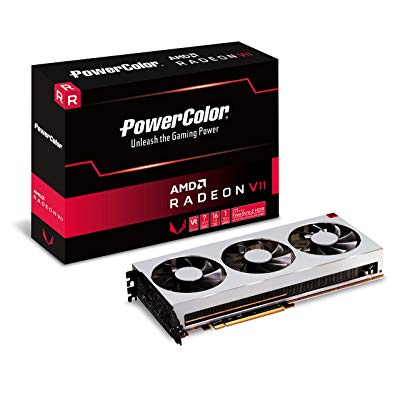
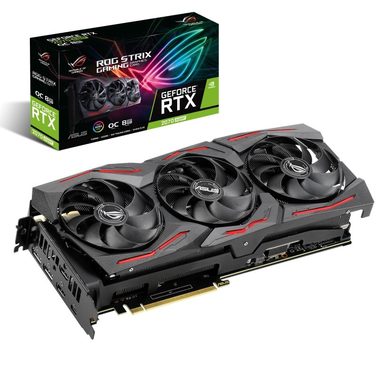
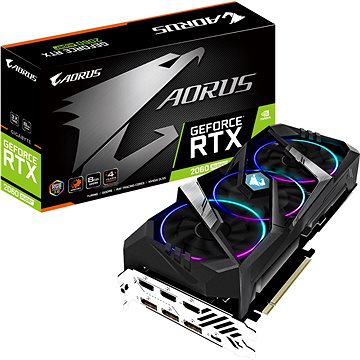
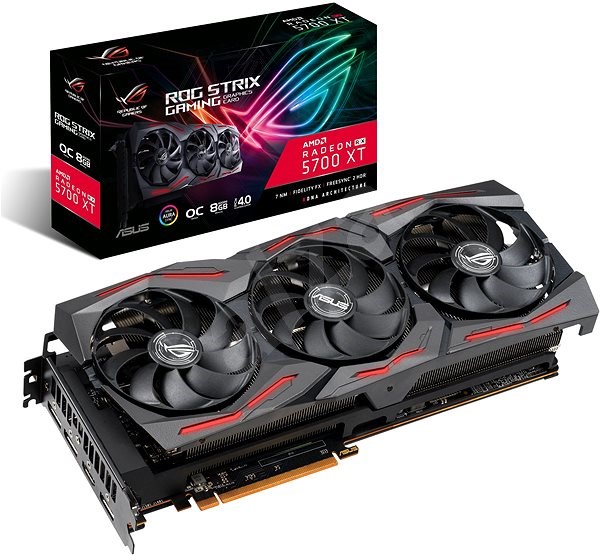

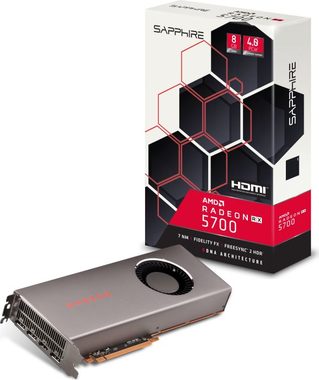
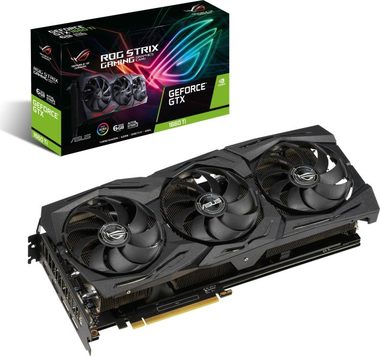
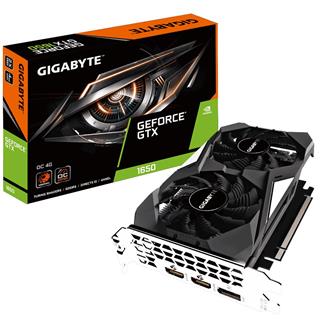
Be the first to comment